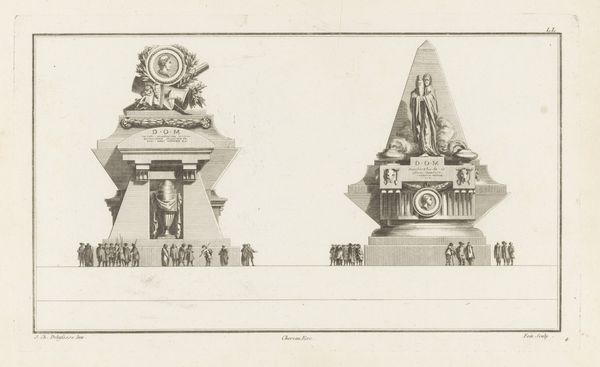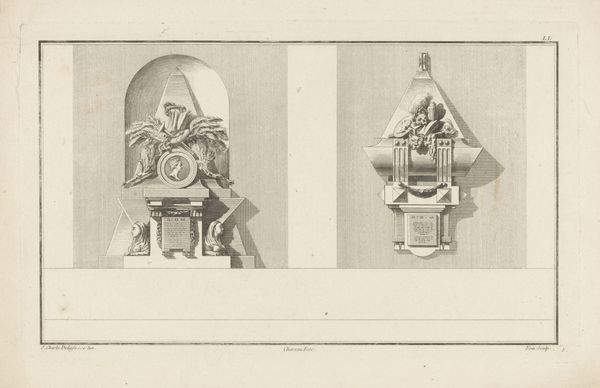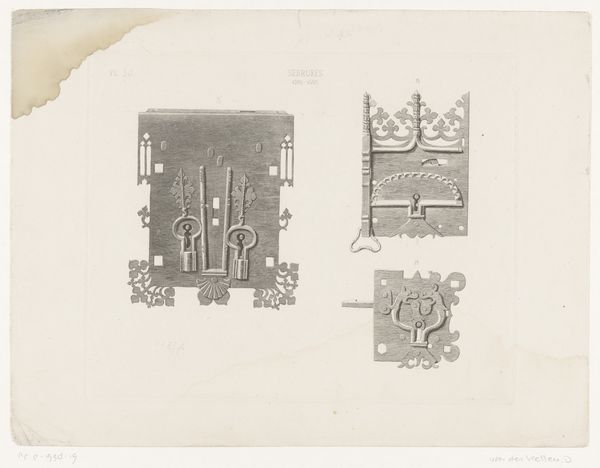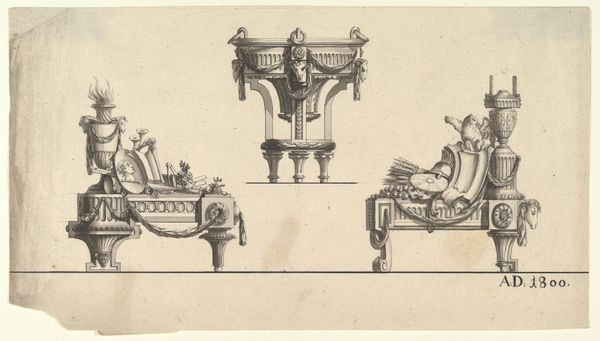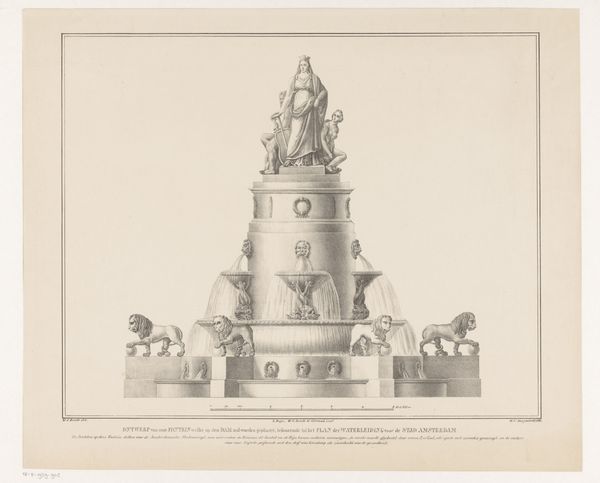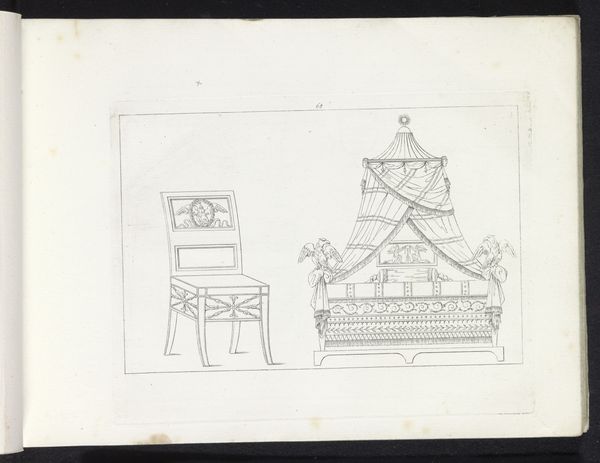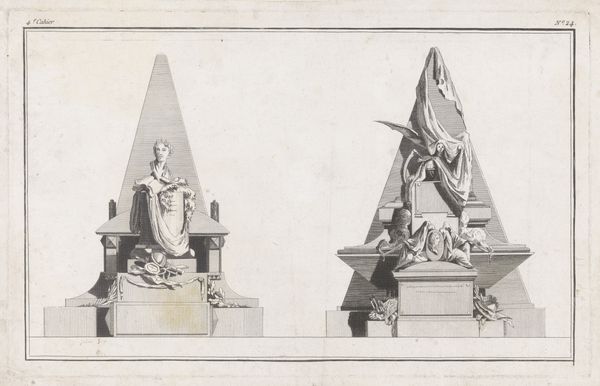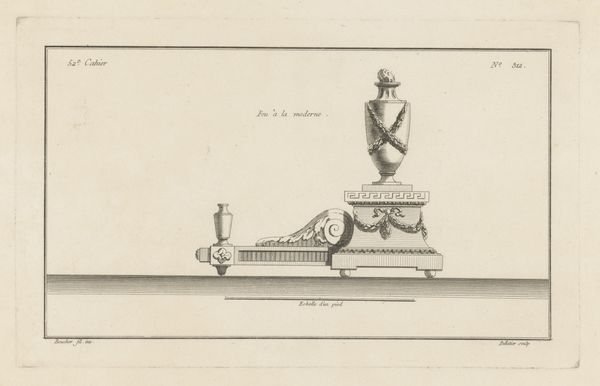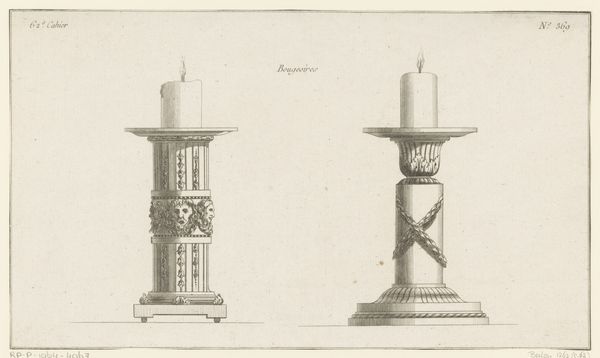
print, engraving, architecture
#
neoclacissism
#
narrative-art
# print
#
landscape
#
classical-realism
#
form
#
geometric
#
line
#
cityscape
#
history-painting
#
academic-art
#
engraving
#
architecture
Dimensions: height 228 mm, width 374 mm
Copyright: Rijks Museum: Open Domain
Curator: So, here we are, gazing upon Augustin Foin's "Twee tombes," created in 1771. The Rijksmuseum holds this print, an engraving that seems almost architectural in its precision. Editor: It really does! What struck me immediately is the somber stillness, the rigid geometry of these imagined tombs. It’s all so…orderly, but also quite cold. What do you see in it? Curator: Cold is a great word for it, isn’t it? Like stepping into a perfectly curated memory. I see the Enlightenment's obsession with order and reason trying to grapple with the messiness of death. The pyramids, the classical figures...it’s all about imposing a sense of control, almost willing immortality into existence through sheer force of artistic will. Don't you think? Editor: I suppose, but doesn't the very act of creating a tomb acknowledge mortality? Isn’t there a contradiction? Curator: Precisely! And isn't that where the beauty lies? It's a dance between what we *know* and what we *wish* to be true. The tiny figures milling about the bases of these monumental structures… they’re us, right? Lost in the shadows of these grand gestures. What do you think the artist might be intimating? Editor: That we are all quite small when faced with legacy? Perhaps these imposing structures would fade like memories as the future rushes by. Curator: Indeed! So it seems we're both finding something very human within all this calculated perfection, don't we? A tiny flicker of doubt. Editor: Absolutely. It's much more poignant now that I've considered it, beyond just "cold." Curator: Exactly! Foin is prompting us to consider something deeper: How do we remember? And what do we hope will survive us?
Comments
No comments
Be the first to comment and join the conversation on the ultimate creative platform.
